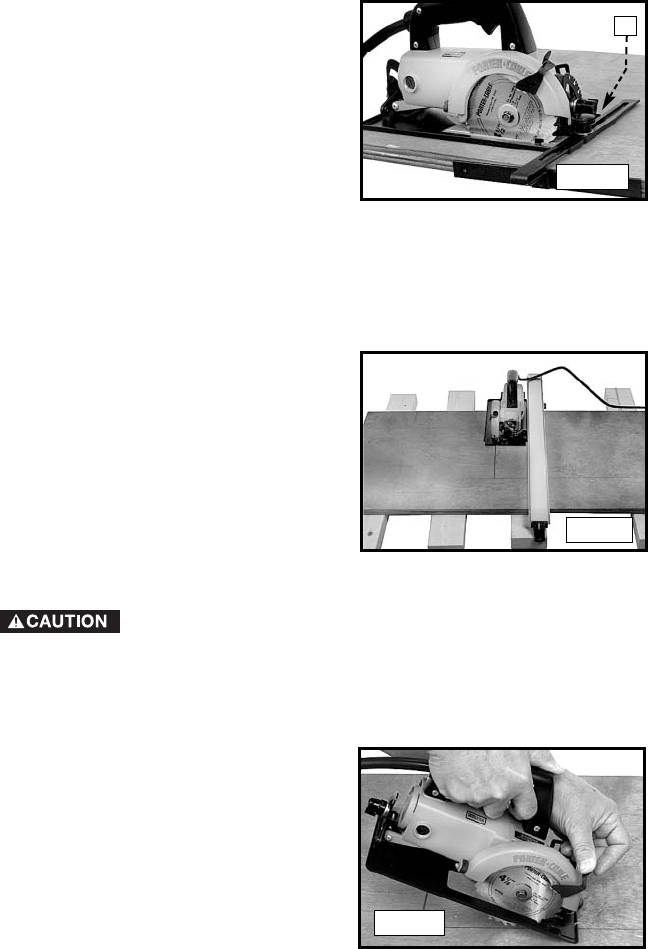
14
RIPPING
Ripping is cutting wood lengthwise. This
operation is performed the same as
crosscutting with the exception of
supporting the workpiece. If the
workpiece is supported on a large table,
bench, or floor, several pieces of scrap
stock approximately one inch thick
should be placed beneath the workpiece
to allow clearance for the protruding
section of the blade. Large sheets of
paneling or thin plywood supported on
saw horses should have 2 x 4’s placed lengthwise between the horses and the
workpiece to prevent it from sagging.
For narrow rip cuts, use the rip guide (A) Fig. 10 (available as an accessory).
Guide the saw by keeping the inner face of the rip guide (A) tight against the
edge of the board.
PANEL CUTS
For making wide cuts (plywood,
paneling, etc.), use a wooden guide
strip. Clamp or tack this strip to the
workpiece far enough back from the line
of cut to act as a fence for the left edge
of the saw base (Fig. 11). The location of
this strip will have to allow for the
distance from the left side of the base to
the blade so that the blade will cut
exactly where desired. This strip should
extend beyond each end of the workpiece.
Support the material being cut with 2 x 4’s or scrap material to
provide blade clearance beneath the material and to provide a firm work
surface.
POCKET CUTS
A pocket cut starts inside the workpiece
and not from the edge. Mark the area
clearly with lines on all sides. Start near
the corner of one side and place the front
edge of the saw base firmly on the
workpiece. Hold the saw up so that the
blade clears the workpiece. Adjust the
blade properly for the depth of cut. For
best results, adjust the blade so that it
barely protrudes through the workpiece.
Push the telescoping guard lever all the
way forward so that the blade is exposed (Fig. 12). Be very careful not to
contact the blade. Start the motor and lower the blade into the work. After the
blade has cut through and the base rests flat on the work, follow your marked
line to the corner. Use a keyhole or bayonet saw to cut the corners.
Fig. 10
Fig. 11
Fig. 12
A


















